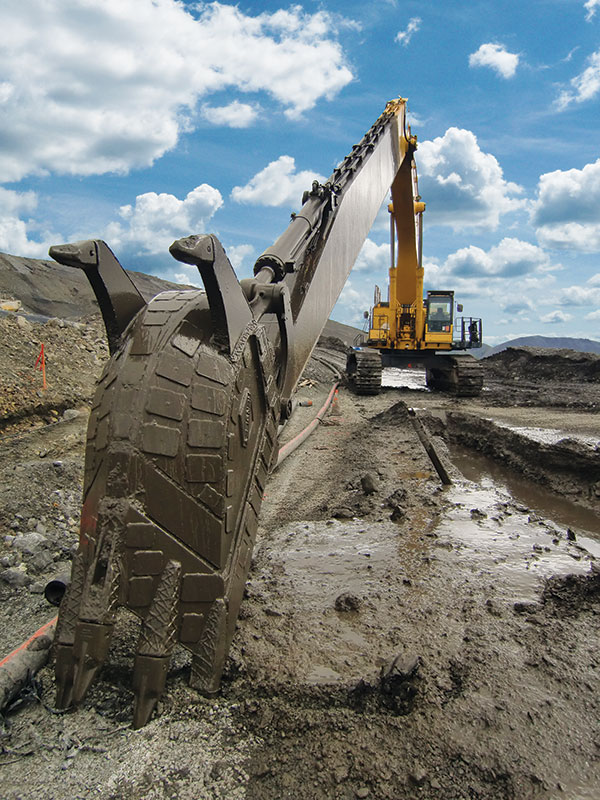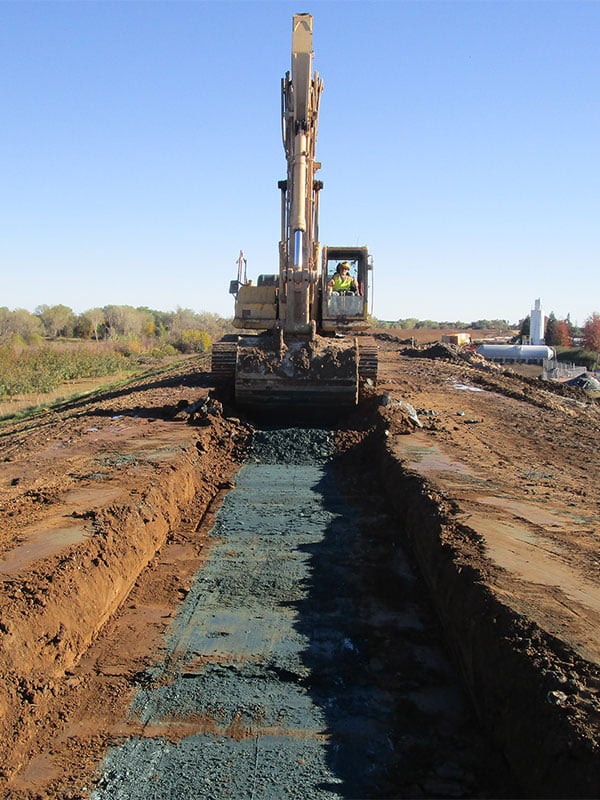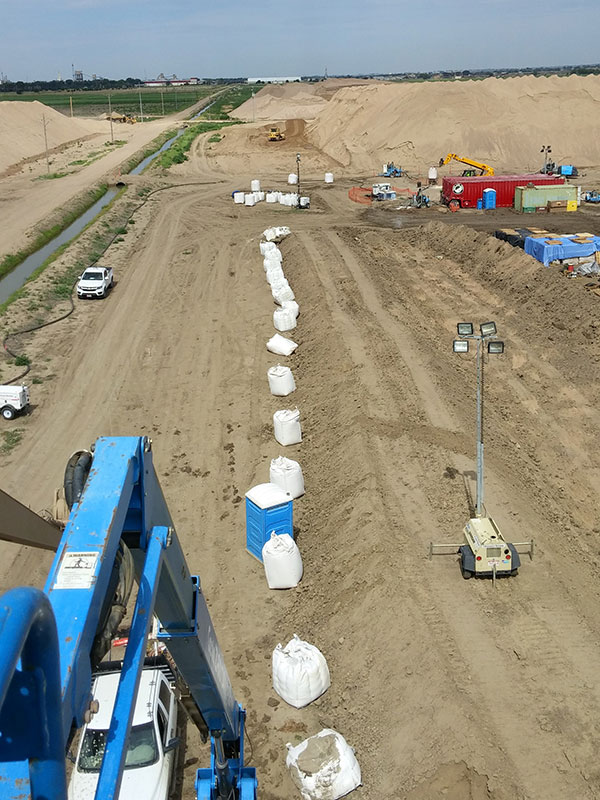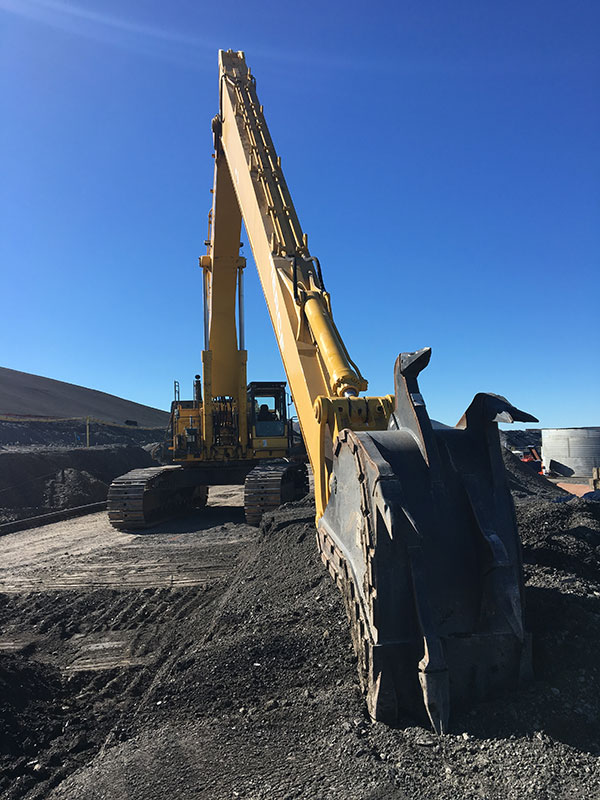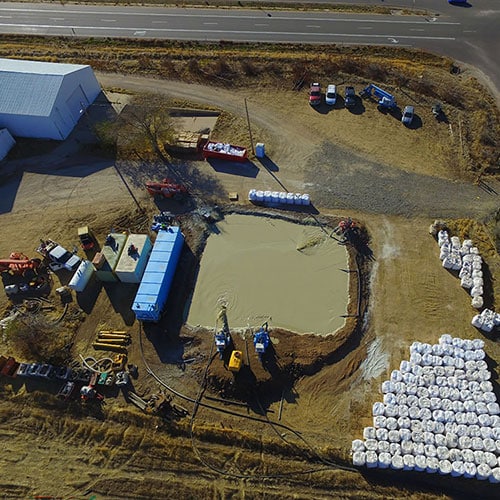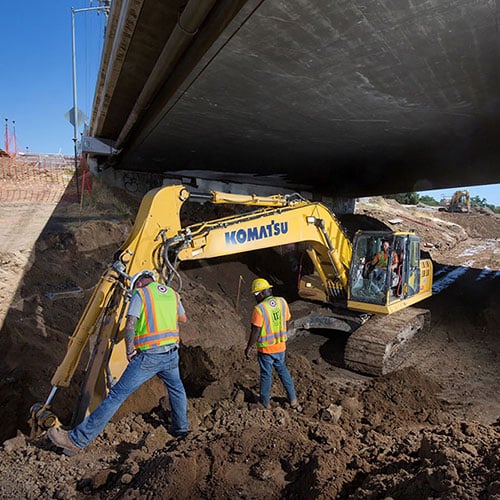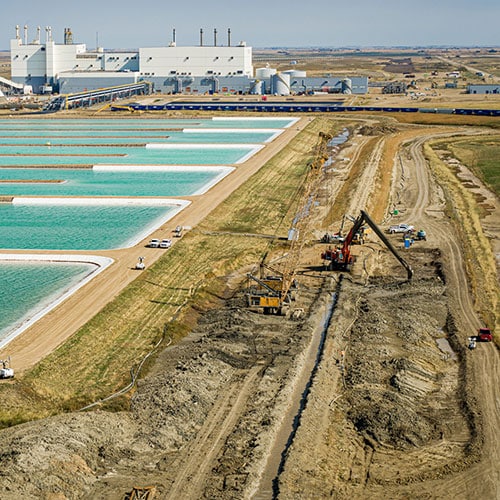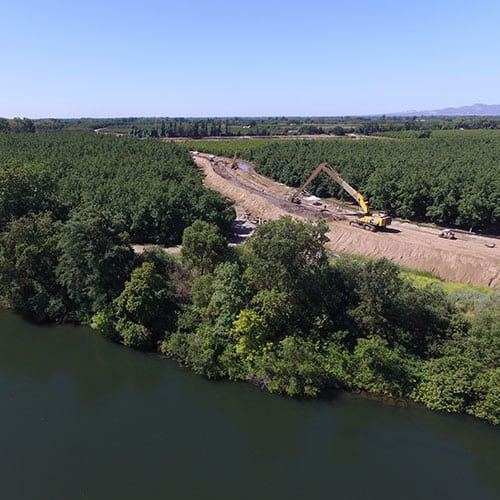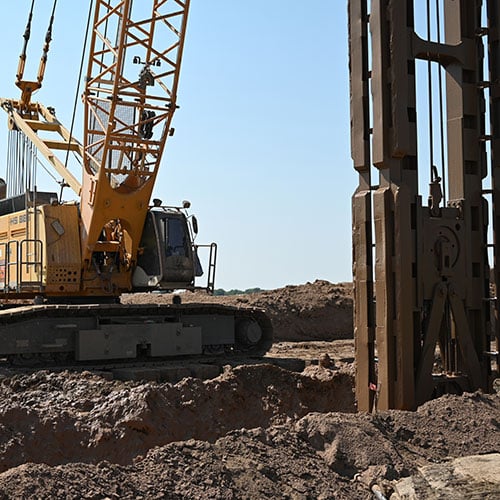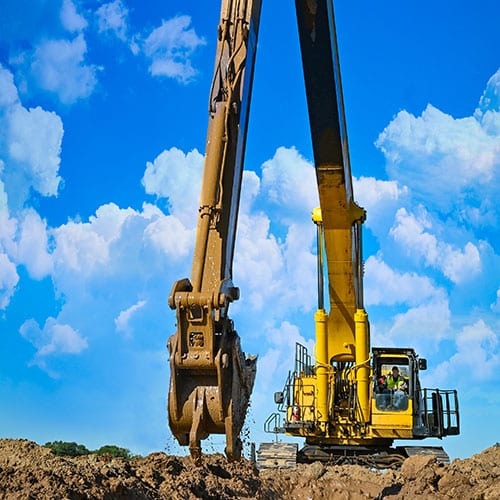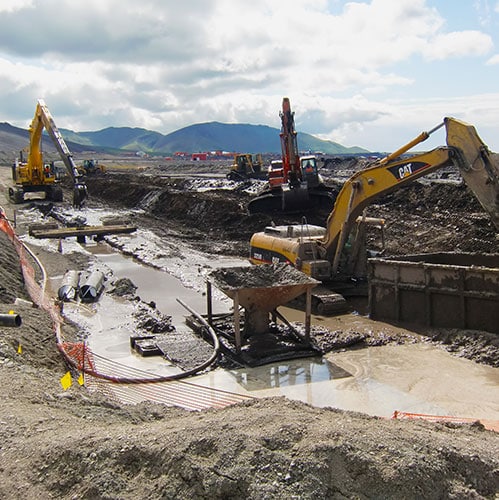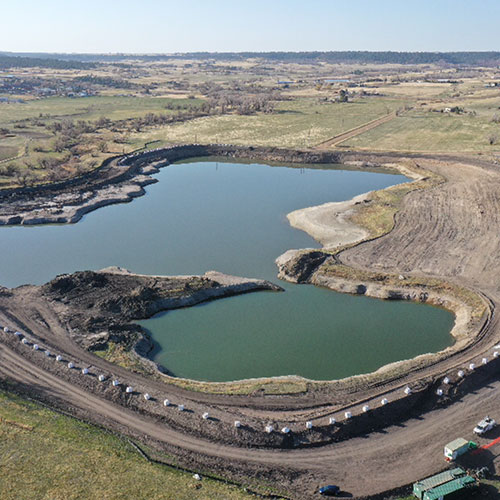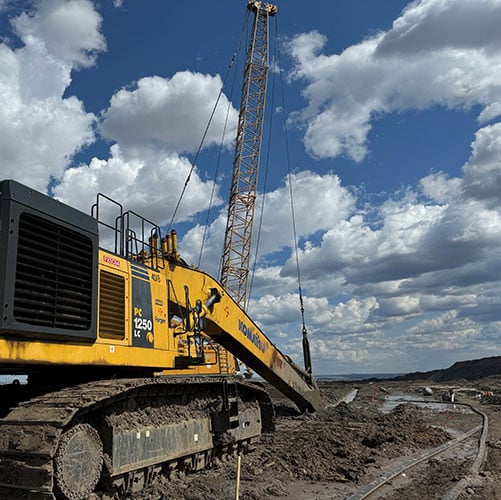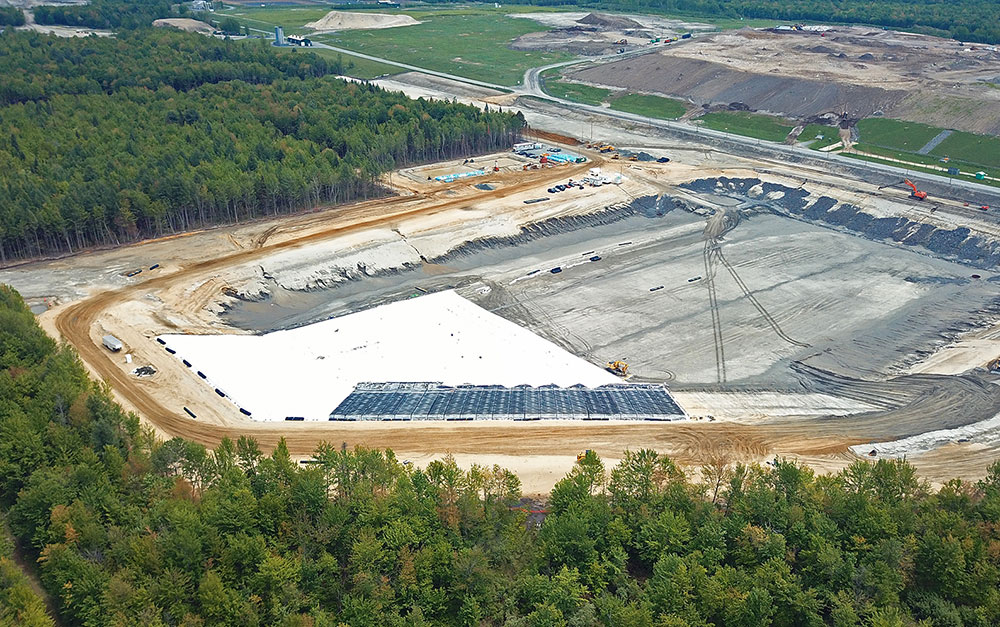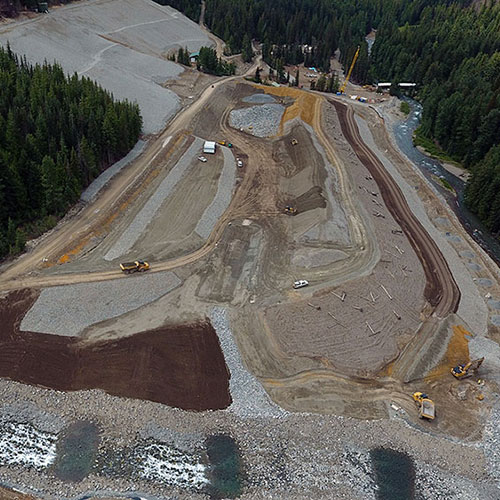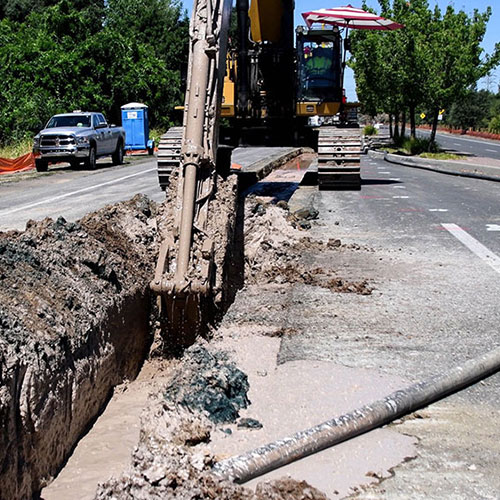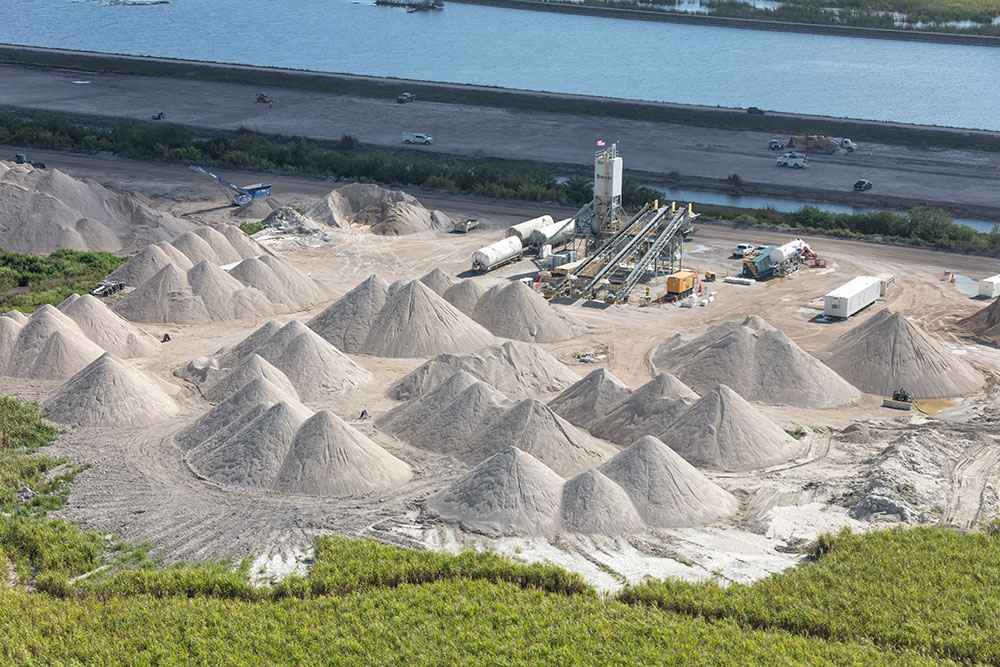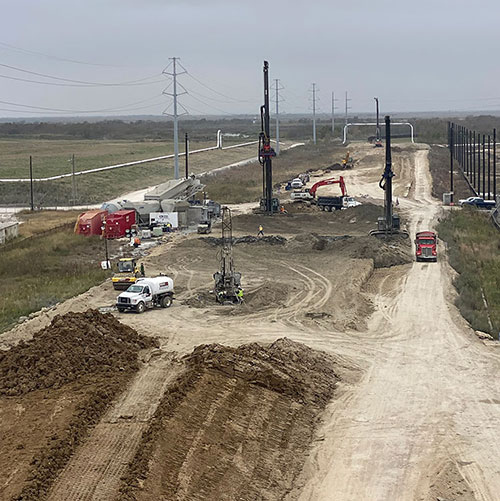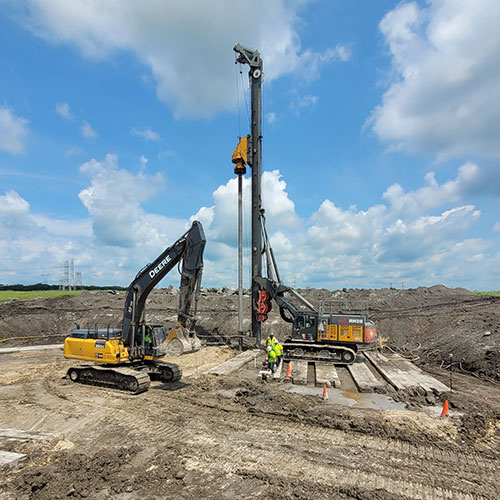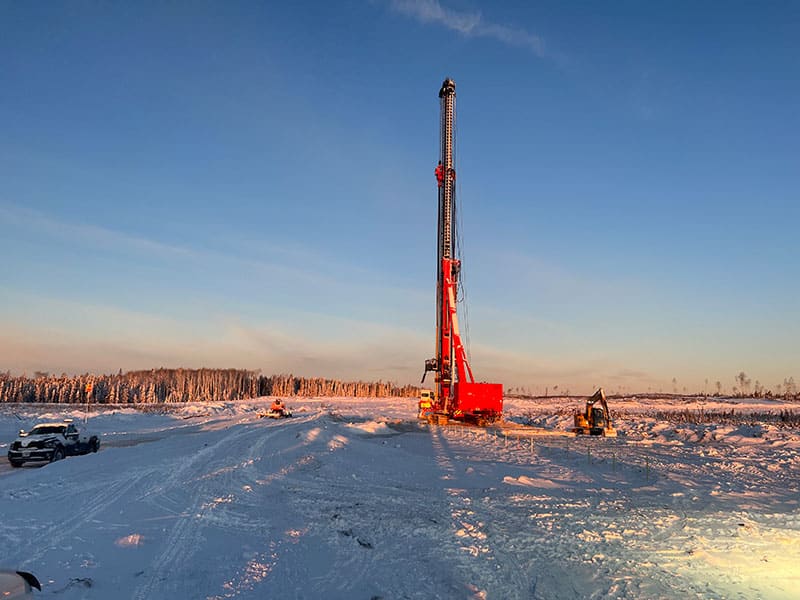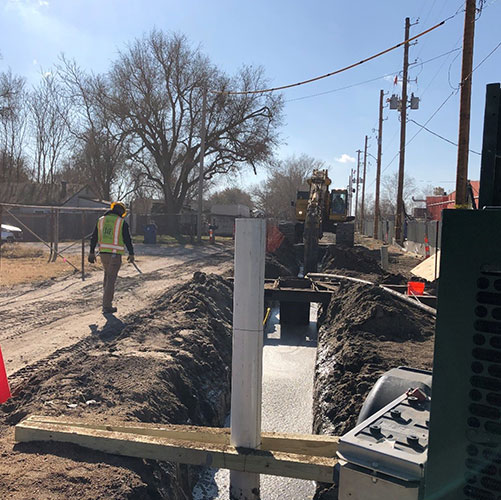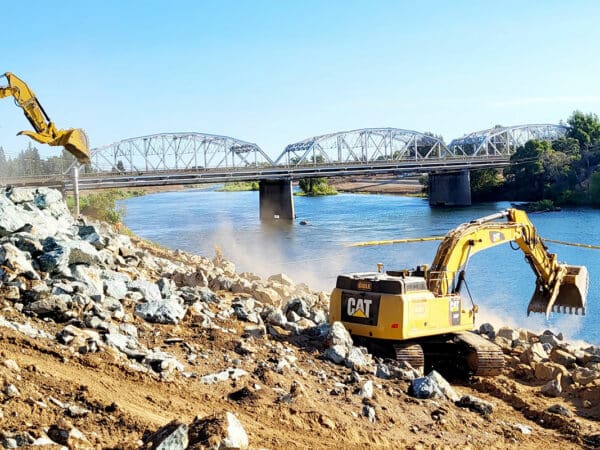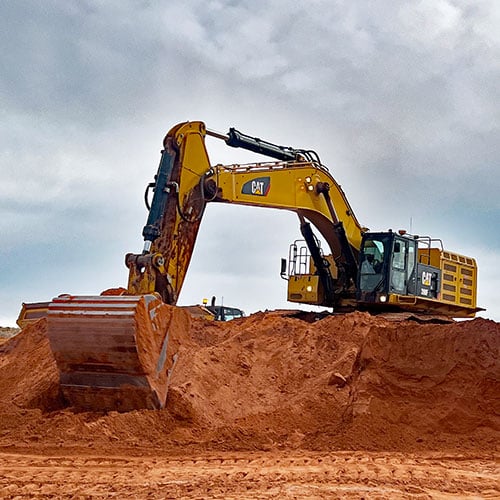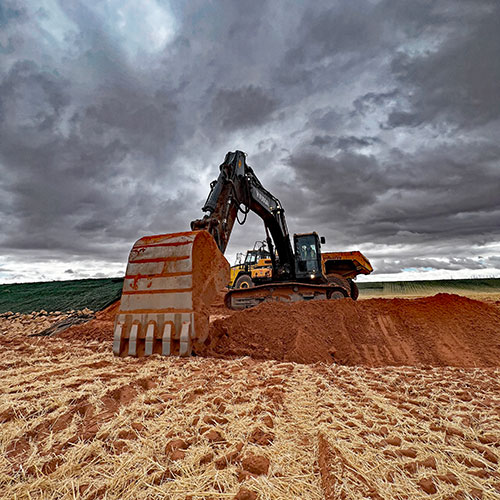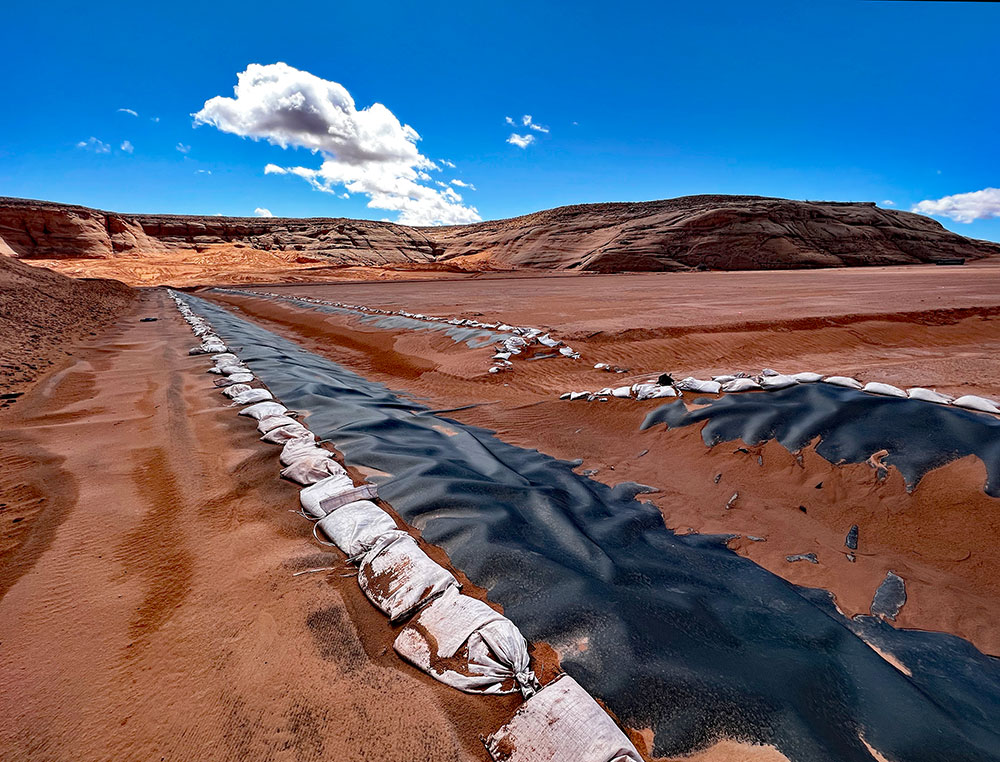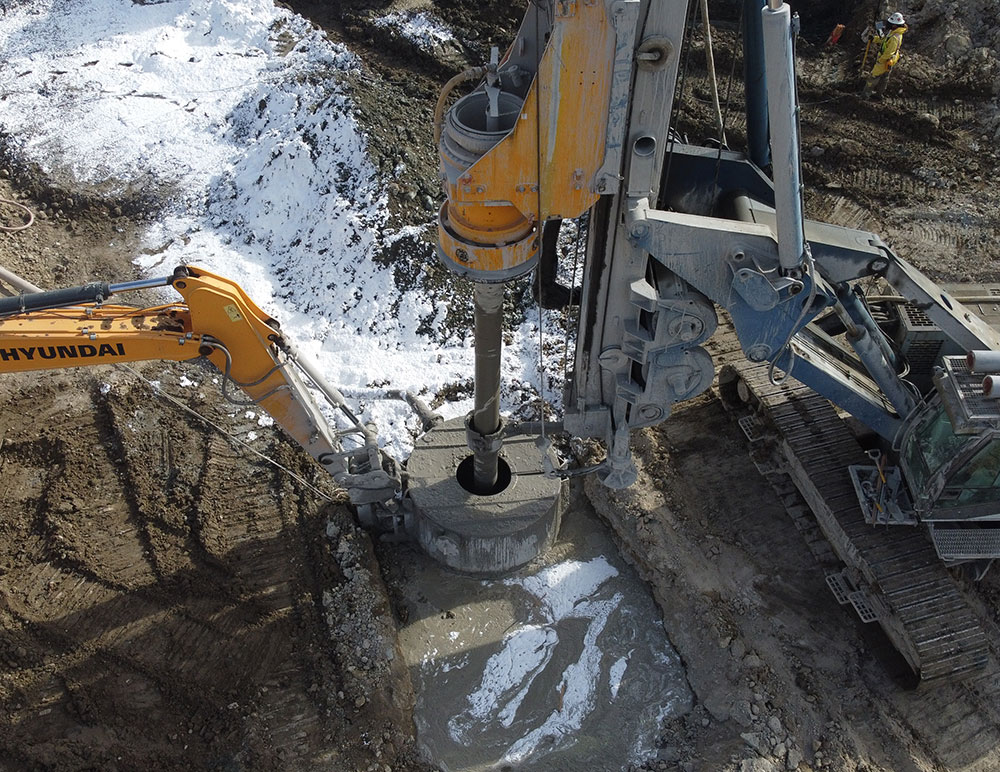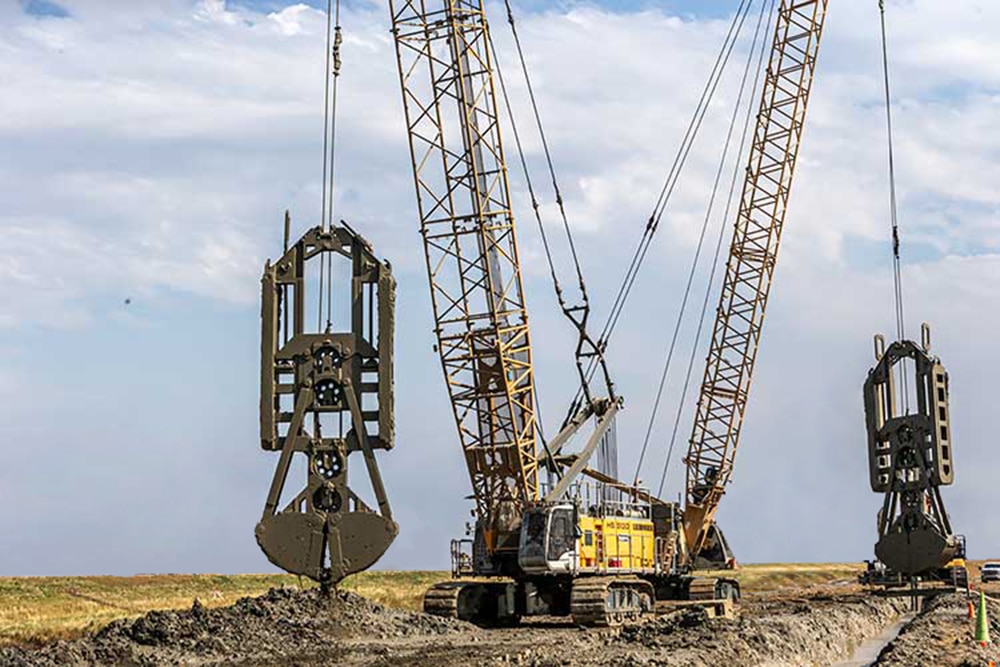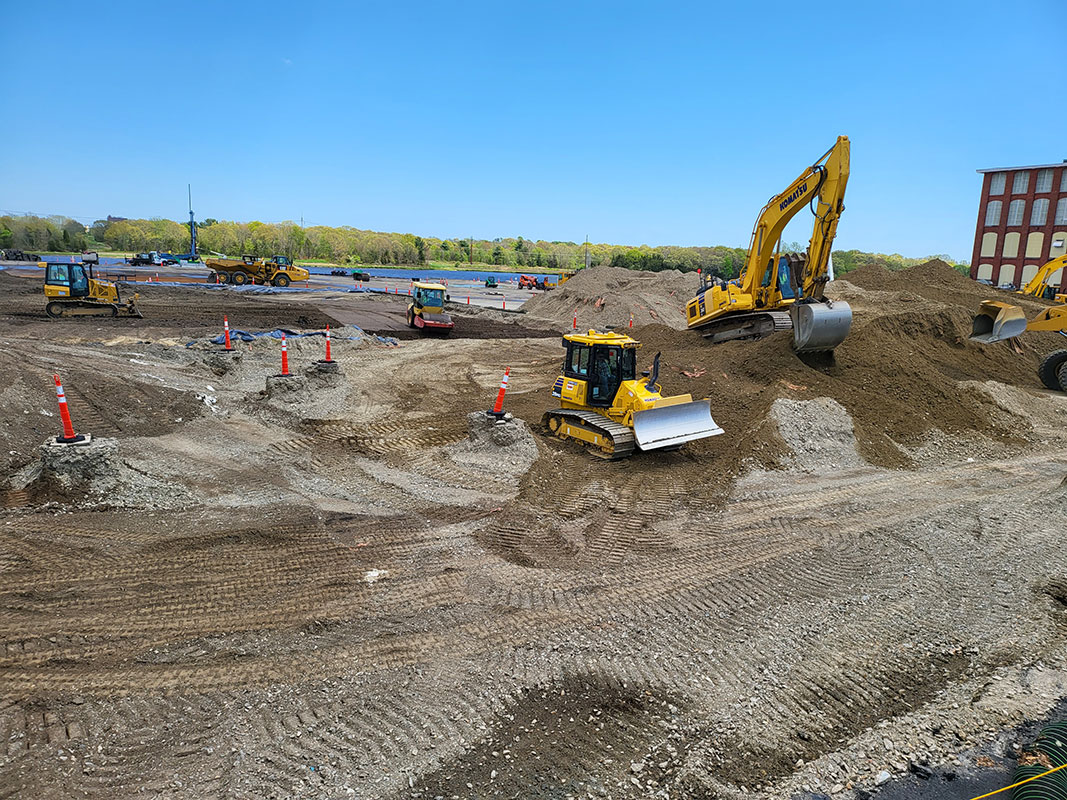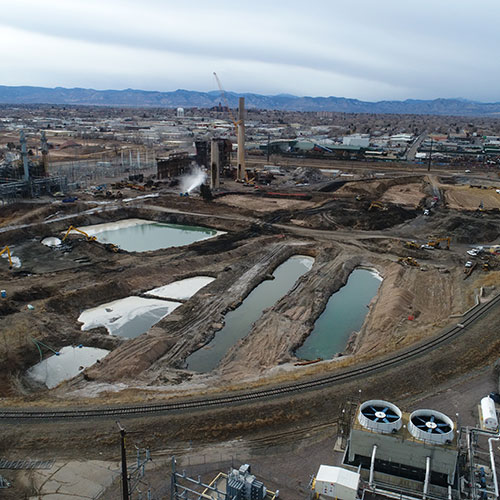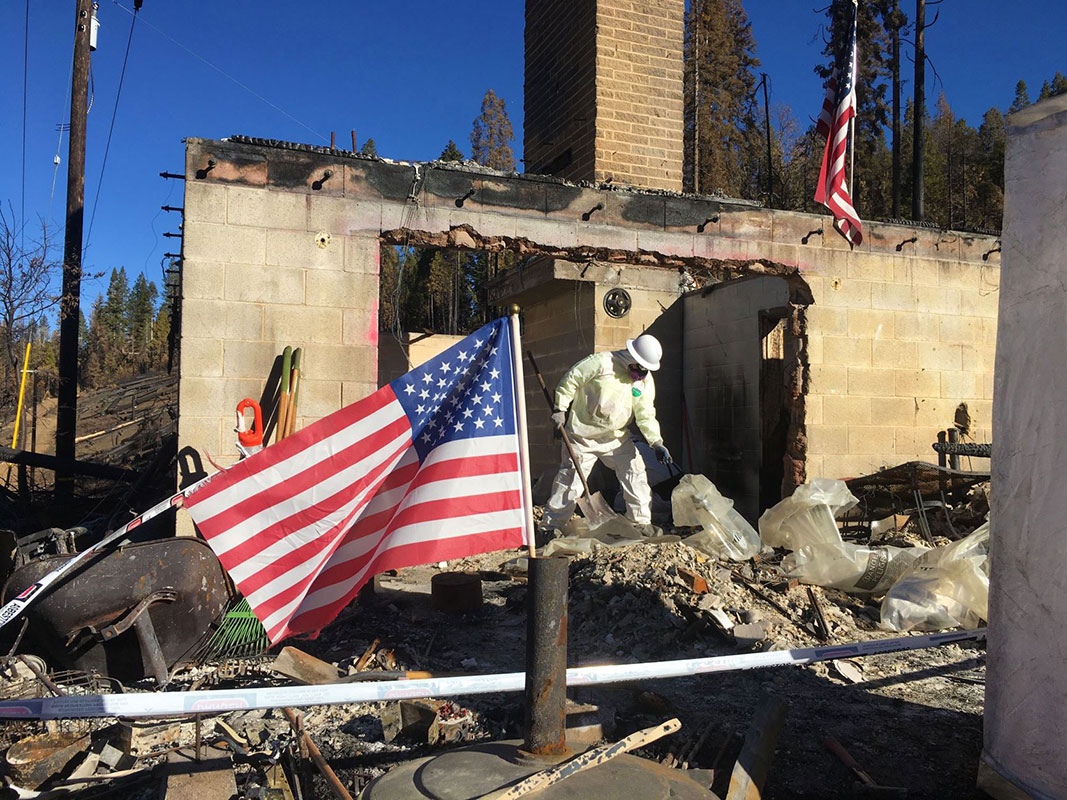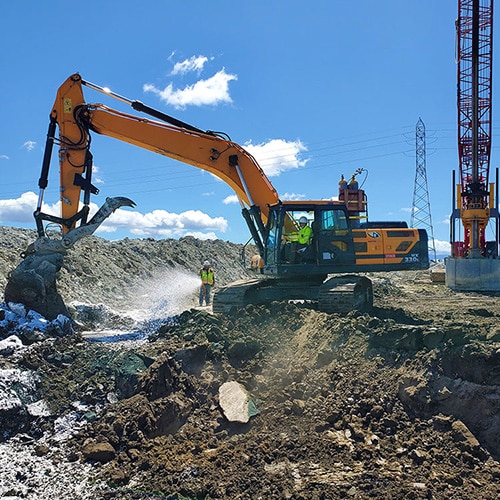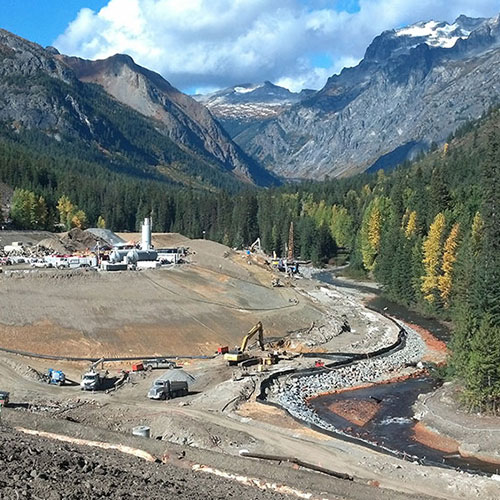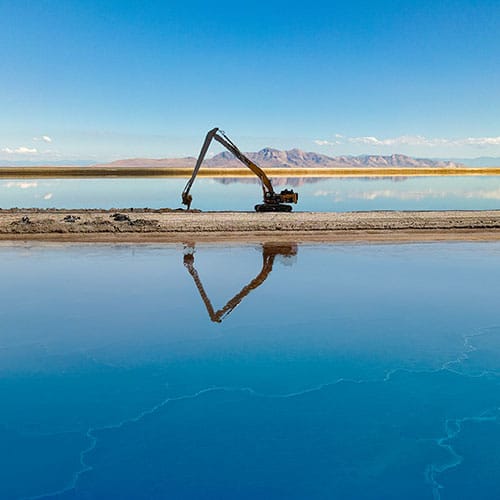We construct low permeability slurry walls for groundwater management and infrastructure protection.
Cutoff and barrier walls, also known as slurry walls, offer numerous benefits for subsurface groundwater management and infrastructure protection. These low-permeability barriers effectively contain groundwater, control contaminated groundwater hydraulically, and mitigate seepage through critical infrastructure such as levees and dams.
Slurry walls are versatile; they can divert water when placed upgradient, capture contamination when placed downgradient, or encircle and contain areas of concern. The construction process typically involves excavating a vertical trench under slurry (bentonite or biopolymer) and backfilling it with low-permeability or reactive materials. The success of slurry wall construction hinges on proper excavation, mixing, slurry and backfill preparation, as well as ensuring trench stability while avoiding damage to nearby structures.
Forgen has constructed over 110 million square feet of slurry cutoff walls, demonstrating our capability and experience in this industry. We offer comprehensive slurry wall services, including design assistance, and overall construction using various methods and materials tailored to specific site conditions and performance requirements.
Types of Cutoff & Barrier Walls
We excel at selecting the appropriate type of barrier walls based on site-specific conditions and project-specific requirements for strength and permeability.
Construction Methods
Our extensive experience includes working in diverse weather conditions and challenging terrains, ensuring successful project execution under various circumstances. We manage complex scheduling requirements, including tight deadlines and round-the-clock operations to meet project goals efficiently. Our expertise allows us to adapt techniques to extreme temperatures, high moisture levels, and rocky landscapes, ensuring optimal performance.
Alternative Delivery
We specialize in delivering projects through alternative contracting methods, aiming to improve quality, reduce costs, enhance efficiency, and manage risks.
Our expertise in heavy civil, geotechnical construction, and environmental remediation allows us to provide innovative solutions with agility. Early stakeholder engagement ensures alignment of project goals, fostering transparency and accountability. By combining technical expertise with innovative problem-solving and strong client communication, we tailor our services to meet each project’s unique challenges, ensuring successful outcomes.

